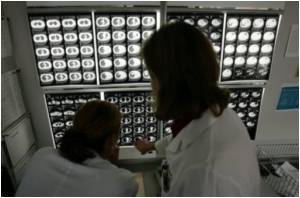Researchers from the University of Miami (UM) and the University of Heidelberg in Germany have developed a mathematical model to understand and

The study reveals a hidden connection between the tumor and the nutrient supplying vessels. The method outlines paths of future tumor expansion and identifies specific points in the vessels that can be targeted to control the growth, explains Neil Johnson, Ph.D., professor of physics, director of the Complexity Research Group at UM College of Arts and Sciences and co-principal investigator of the study.
"Cancer is a disease of many scales. There are the individual cells, the cells that group together to form the tumor, the vasculature and finally metastasis. By including information about how the tumor grows in response to its nutrients, and how the growth of the tumor feeds back the nutrient supply itself, our model moves us one step closer to predicting the future evolution of a patient's tumor," Johnson says. "It opens up a path toward personalized treatment and intervention."
One interesting aspect of the model is that it's based on the distribution of feeding vessels in a tumor section. Since the vessels both feed and are fed by the tumor, estimates of growth characteristics for a patient's tumor can be made. This type of estimate can potentially be applied to a better design of treatment schedules for cancer patients, explains Joseph D. Rosenblatt, M.D., interim director of Sylvester Comprehensive Cancer Center, at UM Miller School of Medicine and co-principal investigator of the study.
"This method could be used to predict growth rates in the human setting and model effects of agents that specifically target supporting processes that sustain the tumor," Rosenblatt says. "Our model may be useful in designing treatment intervals and dosage schedules based on more accurate assessment of growth dynamics and the interdependence of tumor growth and blood vessel formation."
By analyzing images of tumor sections for distribution of tumor cells and tumor vasculature, the researchers created a simple model that predicts the most likely course of the disease, explains Sehyo Choe, post-doctoral research fellow at the Division of Theoretical Bioinformatics at the German Cancer Research Center in Germany and at the Institute for Pharmacy and Molecular Biotechnology University of Heidelberg; and co-principal investigator of the study.
Advertisement
Advertisement














